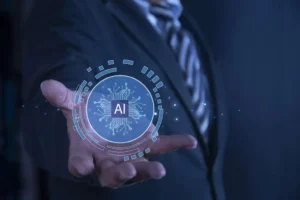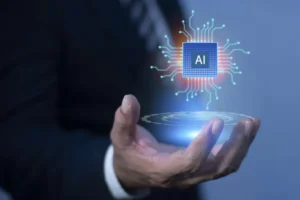Main Aspects of Distributed Computing

A distributed computing system is a space where multiple computers and other devices work on many objectives and elements distributed over a network. The various components of such solutions divide activity and coordinate efforts to perform work more efficiently than if a single PC handled it.
The fact that the scale of distributed computing is rapidly rising is quite logical. The Internet allows us to do many jobs remotely, and many tasks today require significant power. This solution ensures effective interaction between teams, regardless of their geographical location. Let’s discuss such systems’ operation, advantages, risks, and application options in more detail.
The Definition of Distributed Computing
A distributed system is a PC network that interacts to perform various procedures. In this algorithm, several PCs, often located in various regions, cooperate to solve troubles beyond their computing potential. Each element or node is autonomous; they function separately from each other, contributing to the achievement of common goals.
This can be reached through the correct distribution of objectives when a significant volume of work is divided into limited processes. After this, each element receives its specific task. All machines operate in parallel; each component is busy performing its job. At the final stage, individual results are combined into a holistic system.
Machines collaborate through different messaging categories in a distribution system setting, including transmitting information, instructions, and signals. This connection allows multiple machines to function as one whole, although each component operates independently. An essential element of technology is resource management.

We are confident that we have what it takes to help you get your platform from the idea throughout design and development phases, all the way to successful deployment in a production environment!
Primary Benefits of Distributed Computing
Once we have understood technology’s features, it’s time to identify its strengths. Here’s what these systems have in common:
- Flexibility and scalability. You can quickly add or exclude machines to distributed networks to adapt to non-stable standards. The system scales temporarily or permanently to provide you with the necessary resources. It allows you to collaborate with heavy workloads without delays. Scaling is a complex process for a centralized model since information and computing power are collected in one place.
- Huge storage. Grid computing may help you create more storage potential. The fact is that datasets are distributed among several machines and are not stored in one place. This means you can access your data even if one PC fails. Simply add more PCs to the system if you need additional storage volumes.
- Financial efficiency. Several criteria make distributed computing an effective solution. First, it allows firms to use existing assets and does not require the cost of creating innovative infrastructure. It reduces server load and energy consumption, resulting in cleaner computing.
With modern technological advances, distributed algorithms have less than 100 milliseconds of latency. By choosing such models, you can ensure your software will work without failures.
Some Challenges Associated with Distributed Computing
Distributed networks are more confusing than monolithic systems, making their design, usage, and maintenance difficult. Let’s examine the main problems:
- Service. The need to manage connections and coordinate between elements may lead to failures, which increases network maintenance expenditures. Without correct centralized monitoring, you have to work with logs and accumulate parameters to identify the source of problems and quickly eliminate them.
- Difficulties with synchronization. Distribution systems do not have a global clock. They require precise programming to achieve complete synchronization of processes and prevent transmission delays that can lead to critical errors. Synchronization can be problematic in a multifaceted environment, e.g., a multiplayer game, especially in a publicly accessible space over which data transfers occur.
- Efficiency. Distributed algorithms cannot always provide the same efficiency level as centralized solutions because data processing and storage are distributed across various systems and multiple devices.
Dealing with many nodes in a distributed environment may lead to security issues. The adding of one lousy element in a file system or a larger distribution environment may disrupt the full algorithm.

The Leading Applications of Distributed Computing
Distributed computing is not just a theoretical idea. It is applied in various sectors. We have collected several distributed applications:
- Medicine. Experts increasingly utilize distributed solutions to accumulate, analyze, and store extensive medical insights. It allows medical institutions to share medical records, photos and insights with colleagues and laboratories.
- Engineering sector. In various engineering procedures, distributed algorithms are utilized to solve complex work, including project design, improvement, and research, and to cooperate with considerable volumes of information.
- Financial sector. Dealing in the economic branch involves many procedures, including high-frequency trading, risk mitigation, algorithmic trading, investment portfolio creation, etc. Today, all of these activities are based on distributed algorithms. Financial market participants leverage high-speed networks, low-latency messaging solutions, and colocation capabilities.
- Internet of Things (IoT): In IoT, distributed solutions process a significant volume of datasets from various sensors and gadgets and allow decisions to be made in real-time.
As such solutions and the DevOps field develop in the future, the scope of their applications will expand, providing significant benefits to users.
The Most Famous Categories of Distributed Computing
There are several categories of distributed architectures. Let’s study the most popular of them:
- Client-Server. This structure provides load balancing between user and server elements. In this case, the customer initiates the interaction (provides the initial dataset), and the server performs the operations (produces the output dataset). Such interaction involves contacting the server to perform specific work or allocate resources. At the end of the inquiry, the server transmits the dataset to the customer. This algorithm is optimal for viewing online pages, working with email, and processing information.
- N-Tier. Such a distributed systems architecture is divided into three parts, each with a purpose. There is a presentation level (a kind of user interface), an application level (it provides interaction with datasets), and a data level (information is stored here). N-Tier is popular among computer engineers who work with web apps and online software. This algorithm allows adjustments to be made at different levels without adjustment of the whole algorithm.
- Peer-to-peer architecture. The decentralized solution ensures that network responsibilities are evenly distributed among all elements. In such an algorithm, there is no strict hierarchy. Each component can act as a client or server in different situations using its local database. Peer-to-peer solutions allow you to connect devices and share computing power without dedicating a main server.
The most famous distributed solutions nowadays operate via the Internet. They distribute their loads among dozens of cloud online services, launched as needed and deleted after the procedure is finished.
Comparison of Distributed Computing with Other Systems
In recent years, many computing options have appeared, each with its characteristics. Let’s look at the main differences between these models.
Distributed system vs. Parallel computing
Parallel computing is a class of computing in which one or more PCs on a network perform many calculations and processes in parallel. Essentially, it is a particularly closely related kind of distributed computing. In parallel interaction, all elements access a shared memory to exchange insights. At the same time, with distributed processing, each machine has its own memory. Devices use message-passing mechanisms to exchange data.
Distributed system vs. Grid computing
In grid computing, geographically distributed PC networks operate together to solve common problems. An essential property of grid models is that they can be created from the computing powers of various people or companies.
Grid computing is a solution with significant scalability potential. Experts pay special attention to the efficiency and interaction between various networks. Internally, each network acts as a tightly coupled computing system. However, connections between external grids are weaker than in distributed algorithms. Each grid network performs a certain volume of work and shares the results with others.
Distributed system vs. Cloud computing
Cloud computing shares many properties with distributed algorithms. The phrase “cloud computing” refers to any hosting services on the Internet. Such solutions fall into several groups: platform as a service (PaaS), infrastructure as a service (IaaS), and software as a service (SaaS). At the same time, distributed cloud computing can be private or public.
Cloud and distributed solutions as a rule concentrate on distributing services to many PCs. Still, cloud computing usually suggests additional services, including particular apps and data storage, which a business can use to reach its objectives. Simultaneously, distributed computing involves distributing services among various gadgets to solve the same problem.
Final Words
More and more firms are adopting distributed solutions due to their accessibility, scalability, and fault reliability. They have become crucial to wireless networks, cloud solutions, and the Internet. Because distributed systems harness the power of multiple gadgets and processes, they suggest functionality that cannot be achieved by utilizing a single gadget. However, using such models comes with some challenges you must overcome. By realizing the ins and outs of distributed algorithms, GlobalCloudTeam specialists can create and adopt functional distribution solutions that match the needs of different customer groups.
Top Articles
What is Hyperautomation: A Comprehensive Overview of Key Components
I am here to help you!
Explore the possibility to hire a dedicated R&D team that helps your company to scale product development.






